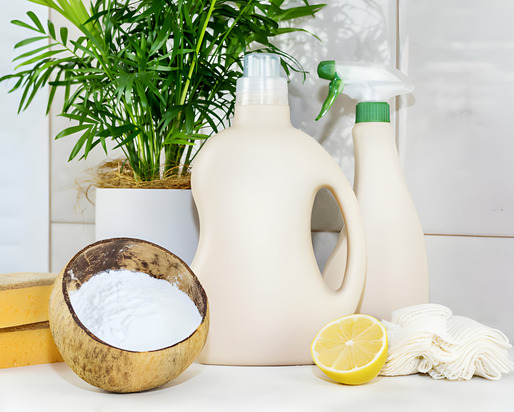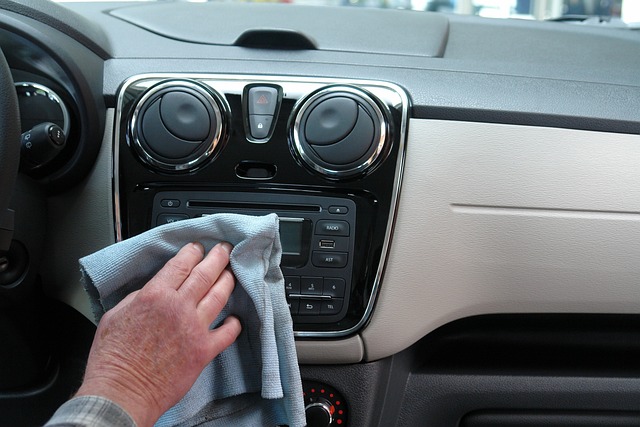Biohazards are biological materials or substances that pose a threat to human health and the environment. These hazards can be in the form of bacteria, viruses, fungi, toxins, and other biological agents. Biohazards are categorized into four levels, with level 1 being the least dangerous and level 4 being the most hazardous. Proper containment and disposal of biohazards are critical to prevent the spread of diseases and environmental contamination.
Biohazard cleanup involves the safe and thorough removal of biohazardous materials, followed by disinfection to eliminate any remaining traces of contaminants. Safe disinfection is paramount to protect the health of those in the affected area and to prevent further contamination. It requires the use of appropriate cleaning agents, tools, and equipment, as well as a well-structured process carried out by trained professionals.
In a world filled with unseen dangers, biohazard cleanup has emerged as a critical service to ensure the safety and well-being of individuals and communities. From crime scenes and trauma incidents to infectious disease outbreaks and environmental disasters, biohazard cleanup is a vital and often unsung hero in maintaining public health. This article explores the essential aspects of biohazard cleanup, from understanding the risks involved to the methods and technologies used for safe and effective disinfection.
Here is our post on How to Choose an Eco-Friendly Cleaning Service for Your Business: A Comprehensive Guide which you will not want to miss.
The Scope of Biohazard Cleanup
Types of Biohazards
Biohazards come in various forms, each requiring specific cleanup procedures:
- Bloodborne Pathogens: These include viruses like HIV and hepatitis, and cleanup is essential in locations where blood spills occur, such as crime scenes and healthcare facilities.
- Infectious Diseases: Cleanup may be needed in areas where contagious diseases have been present, such as during an outbreak of tuberculosis or COVID-19.
- Biological Spills: Accidents involving the release of hazardous materials in laboratories, hospitals, or industrial settings require specialized cleanup.
- Crime Scenes: Homicides, suicides, and accidents often involve biohazard cleanup to address blood and bodily fluids.
- Hoarding Cleanup: In cases of extreme hoarding, biohazardous materials may accumulate, posing health risks.
Locations Requiring Cleanup
Biohazard cleanup is necessary in a wide range of locations, including:
- Crime scenes
- Hospitals and medical facilities
- Laboratories
- Animal control facilities
- Homeless encampments
- Drug manufacturing sites
- Transportation accidents
- Environmental disasters
Risks Associated with Biohazard Cleanup
Health Risks
Cleaning up biohazards is not a task for the faint of heart. Exposure to biohazardous materials can lead to severe health consequences, including infection and disease. Professionals performing biohazard cleanup are at risk of exposure to bloodborne pathogens and other harmful contaminants, emphasizing the need for thorough training and appropriate protective measures.
Legal and Regulatory Considerations
Biohazard cleanup is governed by various regulations and guidelines to ensure safety and compliance. In the United States, the Occupational Safety and Health Administration (OSHA) sets standards for workplace safety, including those related to biohazard cleanup. Failure to comply with these regulations can result in legal consequences and fines. Therefore, it is essential to hire experienced professionals who understand and adhere to these guidelines.
Biohazard Cleanup Process
Safe and effective biohazard cleanup follows a structured process to minimize risks and ensure thorough disinfection:
Initial Assessment
Before any cleanup begins, a comprehensive assessment is conducted to determine the extent of contamination. This assessment helps identify the type of biohazard, the affected area’s size, and the necessary equipment and cleaning agents.
Personal Protective Equipment (PPE)
Personal protective equipment is a crucial component of biohazard cleanup. Cleanup crews must wear full-body suits, gloves, masks, and goggles to prevent exposure to hazardous materials. The type of PPE used depends on the specific biohazard and the cleanup location.
Containment and Isolation
Once the assessment is complete and PPE is donned, the affected area is cordoned off and isolated to prevent the spread of contaminants. This step is critical to protect individuals not involved in the cleanup.
Cleanup and Decontamination
The actual cleanup process involves removing biohazardous materials and disinfecting the affected area. Professional cleanup crews use specialized cleaning agents and techniques to ensure thorough disinfection, which often includes the use of hospital-grade disinfectants.
Waste Disposal
The disposal of biohazardous waste is highly regulated to prevent further contamination. Biohazardous waste is placed in special containers, clearly labeled, and transported to authorized disposal facilities. Compliance with waste disposal regulations is crucial to avoid legal consequences.
See also our post on Cleaning Hacks for Busy Professionals: A Stress-Free Guide
Tools and Technologies for Effective Disinfection
The field of biohazard cleanup has evolved, with new tools and technologies emerging to improve the effectiveness of disinfection:
Chemical Disinfectants
Chemical disinfectants play a significant role in biohazard cleanup. Hospital-grade disinfectants are effective in killing a wide range of pathogens, and they are used to clean and decontaminate surfaces and materials.
Ultraviolet (UV) Light
Ultraviolet (UV) light has proven effective in killing bacteria, viruses, and fungi. UV-C light, in particular, is used for disinfection in healthcare settings, laboratories, and water treatment facilities.
Ozone Generators
Ozone generators release ozone gas, which is an effective disinfectant. Ozone can penetrate porous materials and reach areas that might be difficult to access with traditional cleaning methods.
Thermal Sterilization
Thermal sterilization involves the use of heat to kill pathogens. This method is commonly used in laboratory settings, where equipment and materials need to be sterilized.
Professional Biohazard Cleanup Services
Professional biohazard cleanup services are essential to ensure the safe and effective removal of biohazards. These services provide several advantages:
Certification and Training
Professional biohazard cleanup crews undergo rigorous training and certification programs to ensure they are well-versed in the proper procedures, regulations, and safety measures. This training equips them to handle a wide range of biohazards.
Ethics and Compassion
Biohazard cleanup often involves traumatic and emotionally charged situations, such as crime scenes or accident sites. Professional cleanup teams are trained to approach their work with compassion and respect for the feelings of those affected.
See also our post on Green Cleaning Products for an Eco-Friendly Kitchen
DIY Biohazard Cleanup: What Not to Do
In some cases, individuals may be tempted to attempt biohazard cleanup themselves to save money. This is strongly discouraged due to the many risks involved. DIY cleanup can lead to improper disinfection, inadequate waste disposal, and personal exposure to dangerous contaminants. It is always best to leave biohazard cleanup to trained professionals.
Conclusion
Biohazard cleanup is a crucial service that safeguards public health and safety. It involves much more than just cleaning; it requires thorough training, strict adherence to regulations, and a commitment to ensuring the safety and well-being of communities. Safe and effective disinfection is the cornerstone of biohazard cleanup, and it plays a pivotal role in preventing the spread of diseases and minimizing the impact of traumatic events. As our understanding of biohazards and technology continues to advance, we can look forward to a safer and healthier future, thanks to the dedicated professionals who work tirelessly in this essential field.














